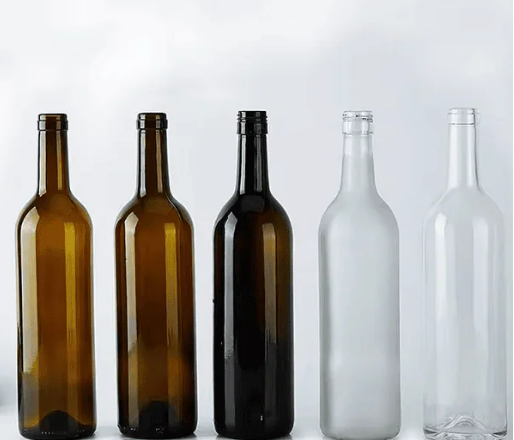Table Of Contents
|
| 1.Finish |
| 2.Neck |
| 3.Shoulder |
| 4.Body |
| 5.Heel |
| 6.Push-up |
| 7.Base |
Glass constitutes an indispensable element in the contemporary packaging arena. Renowned for its recyclability and unrivaled durability, glass stands as the quintessence of sustainable packaging solutions. Capable of undergoing numerous recycling cycles without any compromise in quality, glass epitomizes eco-conscious packaging practices, aligning perfectly with the burgeoning demand for environmentally friendly options.
One of the most remarkable characteristics of glass resides in its nonporous and impermeable quality, safeguarding the integrity of the products housed within. Its inherent capacity to prevent chemical leakage guarantees the preservation of flavors and the upkeep of product quality, thereby heightening consumer confidence and satisfaction.
Across various sectors, spanning from food and beverages to wine, perfumes, and spices, businesses are increasingly gravitating towards glass as their favored packaging medium. Nevertheless, in the midst of this transition, it becomes essential for businesses to acquaint themselves with the complexities of glass bottle construction.
Embark on a journey of discovery as we penetrate the multi-faceted realm of glass packaging. Let us endow your business with the knowledge required to unlock the full potential of glass as a packaging solution.
Plunge into the intricate universe of glass bottle anatomy, where every component holds a crucial role in the functionality and aesthetics of the final product. Whether creating a wine bottle or a versatile glass container, comprehending the fundamental parts is of utmost importance. Let us commence a journey through the seven essential components that delineate the anatomy of a glass bottle.

Part 1: Finish
The finish of a bottle comprises the upper portion of the neck and acts as a crucial element for closure compatibility. Boasting a plethora of variations custom-tailored to accommodate diverse closures, the finish is meticulously fashioned during the bottle molding process. It not only augments product presentation but also facilitates differentiation in a highly competitive market landscape.
Part 2: Neck
As the narrowest portion of the bottle, the neck holds a pivotal position in controlling the flow of contents and accommodating diverse closures. Often sporting a distinct design, the neck is characterized by a transition from the bottle’s body to its mouth, providing versatility in dispensing options.
Part 3: Shoulder
Linking the main body to the neck, the shoulder takes on diverse shapes and sizes, ranging from substantial to slender, and from rounded to squared. This crucial region impacts pouring speed and aesthetics, rendering it a critical consideration in bottle design.
Part 4: Body
Consisting of the main area for content containment, the body of the bottle showcases characteristics that are tailored to specific purposes. From providing space for wine labels to facilitating effective decoration, this region offers abundant space for branding and aesthetic enhancements.
Part 5: Heel
Indicating the transition from vertical to horizontal, the heel functions as a platform for bottle stability and identification. Its recessed area facilitates labeling and design, thereby contributing to the overall functionality and visual allure of the bottle.
Part 6: Push-up
Boasting an inward dome at the center of the base, the push-up enhances stability and offers a flat resting surface for the bottle. This component is especially crucial for bottles in need of additional support, such as wine bottles.
Part 7: Base
Surrounding the outer perimeter of the bottom, the base acts as a platform for the bottle to rest while concealing handling scratches. Its mottled finish augments durability, guaranteeing the structural integrity of the container.

Since ancient times, glass has been demonstrated to be an excellent packaging material, and this holds true even today. The food, beverage, and cosmetics industries gain a great deal from the use of glass bottles as they can preserve the integrity of the contents and protect the products from external influences.
If you’re looking for a reputable, affordable bulk glass container supplier, look no further than Bolite. Contact us





